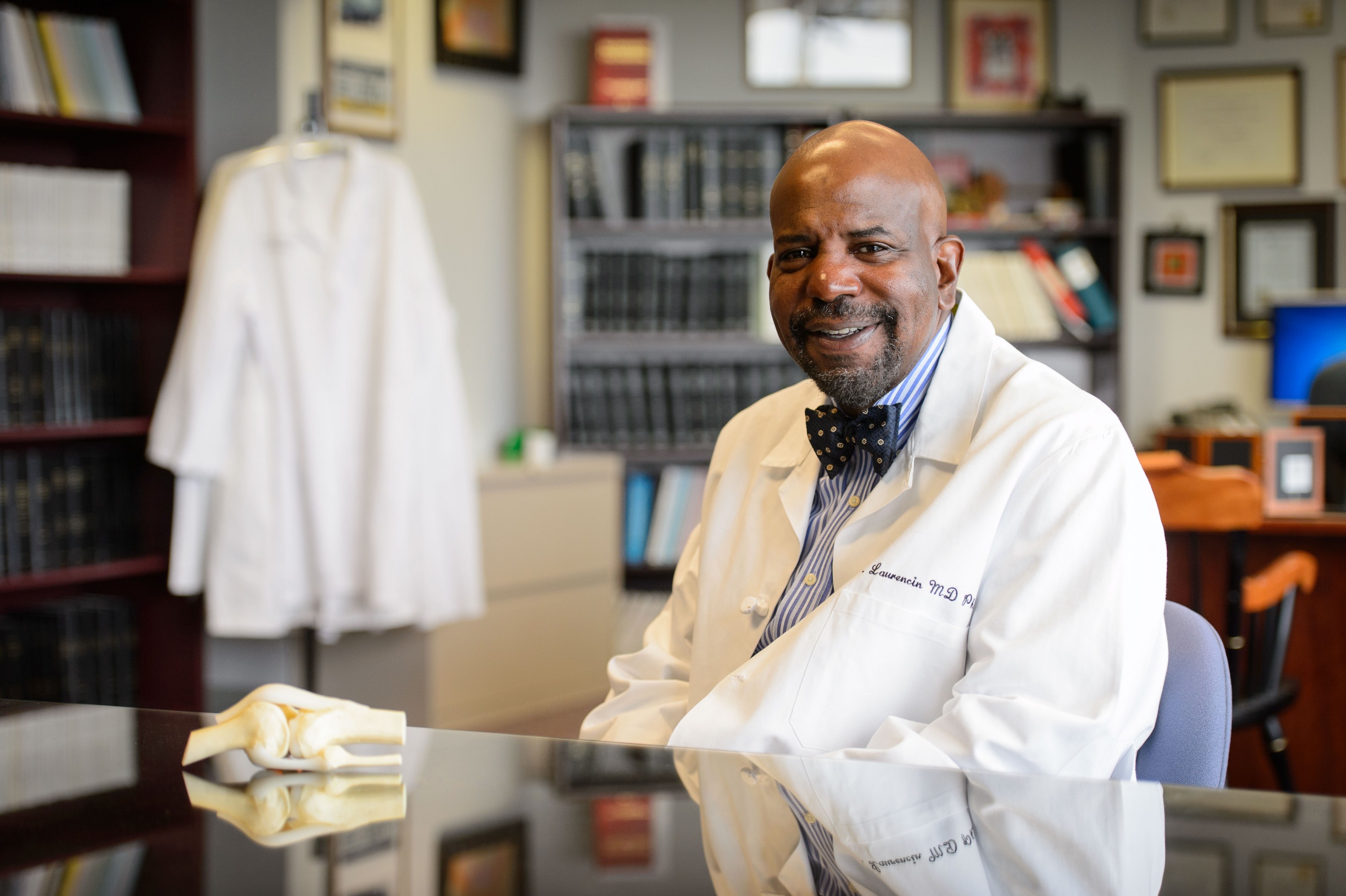A review of public health data through the first few weeks of the COVID-19 pandemic finds disproportionate infection and mortality rates in Connecticut’s minority populations, particularly among Blacks.
“We had the first peer-reviewed, published study that really stated that,” says Dr. Cato T. Laurencin, CEO of the Connecticut Convergence Institute for Translation in Regenerative Engineering at UConn Health and lead author. “Also, we’re very proud that we pushed the state to move forward in terms of getting the data. Once they got the data and saw all the data, they realized that this was important to place on the state website for all to see.”
Laurencin is editor-in-chief of the Journal of Racial and Ethnic Health Disparities, in which the research article is published. Dr. Aneesah McClinton, a research fellow at the Connecticut Convergence Institute, is second author. The study cites racism and its interposition with social and health factors for increased vulnerability in Black populations in comparison to other populations.
“We can talk about poverty, we can talk about overcrowding, but there’s a certain amount of load that Black people have from facing the social and economic marginalization of being Black in America,” Laurencin says.
“We should treat this as a real emergency for the Black community.”
It has to do with the concept of allostatic load, or a weathering effect on an individual based on his or her exposure to chronic adverse societal factors that cumulatively induce stress and early health deterioration. It is largely accepted in the scientific community that Black and Hispanic populations bear a greater allostatic load than the white population, thus making them more vulnerable to the ill effects of, in this case, a pandemic.
Other contributing factors that increase exposure to and spread of infectious disease include, when compared to their white counterparts, a greater likelihood to live in densely populated housing and work in the service-industry or other jobs where telecommuting is not an option. A public health crisis can compound these factors.
“On the education level, schools in the inner cities may not have distance learning capabilities,” Laurencin says. “We already know there’s a digital divide that’s taking place between the haves and the have-nots in terms of technology for such things as the internet.”
Laurencin also cautions against complacency from a belief that the mortality rate from COVID-19 is relatively low, as the long-term consequences are uncertain.
“COVID-19 works by producing damage in the lungs, and it’s not clear whether that damage is irreversible,” Laurencin says. “Every young person now becomes an old person later, and we don’t know what the chronic effects of COVID-19 are going to be, but we know it will not result in improved health in the future.”
Laurencin also is calling for the establishment of a national commission to examine the racial and ethnic disparities in COVID-19, in both the short term, with testing and treatment, and the long term, to help address a larger issue.
“We should treat this as a real emergency for the Black community, and that means really addressing the components in our society that are contributing to the high allostatic load that we see with Blacks,” Laurencin says. “Ultimately we have to work to create a society in which the marginalization does not occur, where racism and discrimination are actually named and addressed, and tackled, in order for us to truly have a just and equitable society.”



